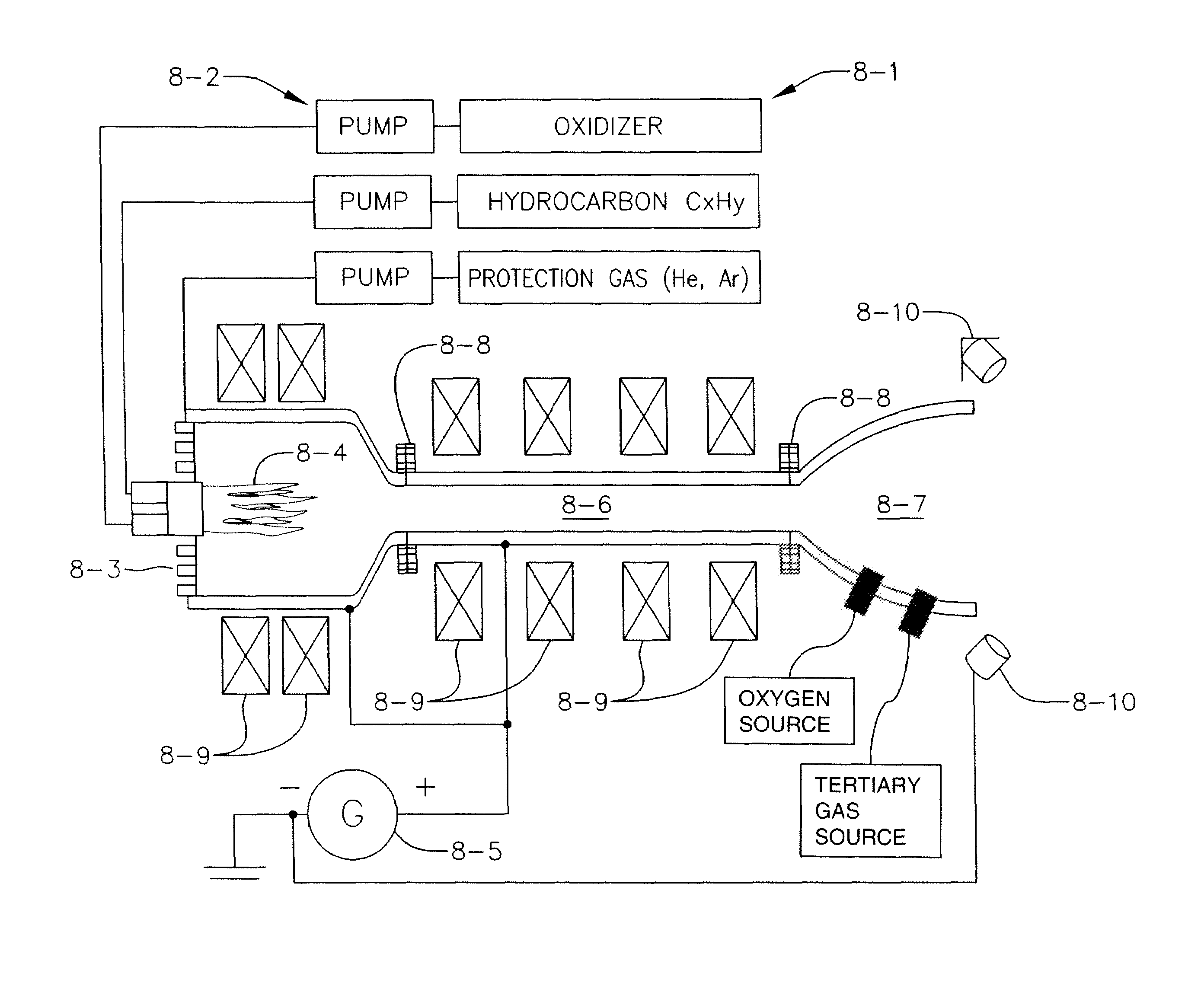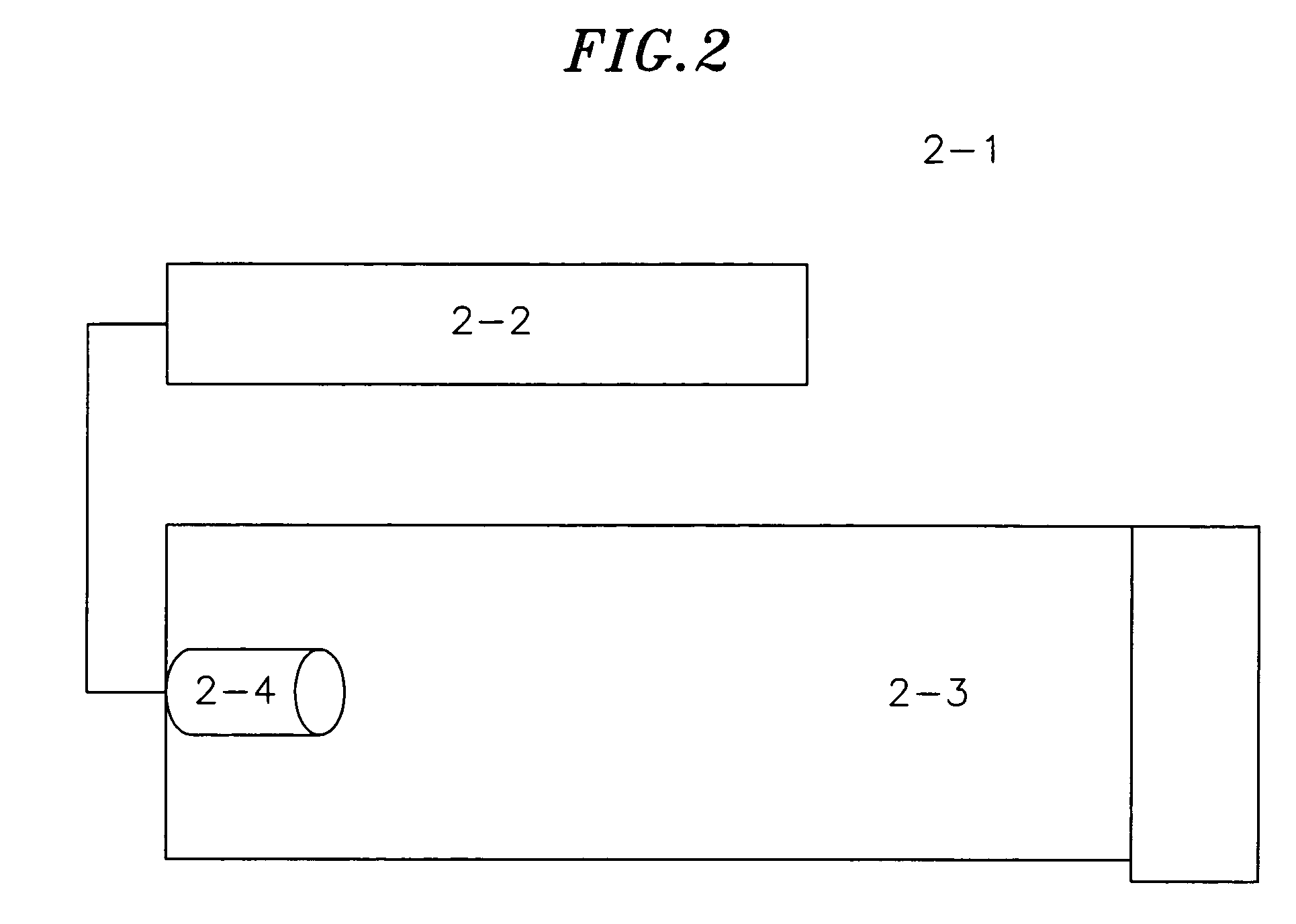Electro-thermal nanoparticle generator
a nanoparticle generator and electro-thermal technology, applied in the direction of machines/engines, marine propulsion, vessel construction, etc., can solve the problems of chemical reaction chamber and acceleration system inside the diffuser separation, no system has been designed that would allow for the variability of particle size and mass
- Summary
- Abstract
- Description
- Claims
- Application Information
AI Technical Summary
Benefits of technology
Problems solved by technology
Method used
Image
Examples
second embodiment
[0094]an acceleration channel (7-1) is shown in FIG. 7b. Segments (7-6) of the acceleration channel are electrically disjointed by isolators (7-7) and arranged symmetrically along a central axis. In this embodiment all segments are connected to one generator, but it is also possible to provide several generators without limiting the invention. The generators could be joined with single segments or even segment groups. In a further embodiment of this invention permanent magnets or electromagnets could be arranged around the acceleration channel (7-1). The magnets are not shown in FIG. 7b.
[0095]A further embodiment of the acceleration channel is shown in FIG. 7c. The segments (7-6) of the acceleration channel (7-1) have a telescopic movable arrangement. The arrows in FIG. 7c show the mechanical adjustment units schematically. This embodiment allows for the length of the acceleration channel to be adjusted. In addition to telescopic movable arrangements there could be mutual outer or ...
first embodiment
[0110]In a first embodiment, the wall material of the combustion chamber or a collision-sheet are made of a main group, d-block or f-block metal, or an alloy of at least two metals. Due to the extreme heat and abrasion within the plasma-chamber, the metal (or metal alloy) evaporates into the plasma-chamber. Then, ionization and incorporation occurs into rather defined CxHyMez-clusters or CxHyMe1z1Me2z2 . . . -clusters (Me=metal). This approach has the advantage of greater flexibility for the metal composition, and the cooling system (or at least a part of the cooling system) could be saved.
[0111]In a second embodiment, a main group, d-block, or f-block metal (as conventionally defined in the periodic table) can be employed as separate chemical substances, which can be evaporated relatively easy (at T2O) with a relatively low boiling point; metal hydrides with suitable evaporation properties (such as CaH2); suitable metal carbides (such as CaC2); and metal alloys (as for instance wit...
PUM
| Property | Measurement | Unit |
|---|---|---|
| temperature | aaaaa | aaaaa |
| temperature | aaaaa | aaaaa |
| diameters | aaaaa | aaaaa |
Abstract
Description
Claims
Application Information
 Login to View More
Login to View More - R&D
- Intellectual Property
- Life Sciences
- Materials
- Tech Scout
- Unparalleled Data Quality
- Higher Quality Content
- 60% Fewer Hallucinations
Browse by: Latest US Patents, China's latest patents, Technical Efficacy Thesaurus, Application Domain, Technology Topic, Popular Technical Reports.
© 2025 PatSnap. All rights reserved.Legal|Privacy policy|Modern Slavery Act Transparency Statement|Sitemap|About US| Contact US: help@patsnap.com



